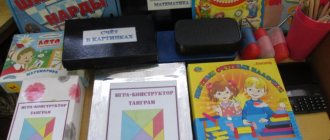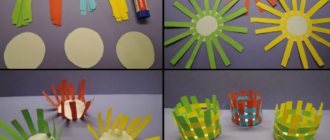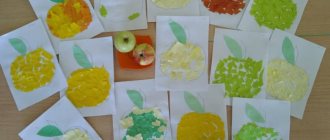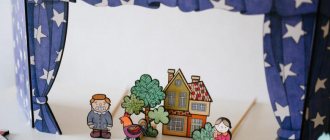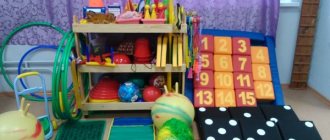What is a corner of solitude
Picture 2 A place of solitude helps reduce stress
A privacy corner is a specially designated part of the room where a relaxation area for children is set up. It is understood that the presence of such a separate zone in each group of a preschool educational institution (DOU) helps children of all ages:
Everyone needs a corner of privacy
- Adapt to kindergarten.
- Experience temporary separation from parents.
- Overcome the stress that inevitably arises when communicating with peers.
- Get used to and get used to new people and circumstances around you.
Goals and objectives
Creating such a relaxation zone is necessary to solve the following problems:
- To help preschool children survive separation from their parents, to facilitate adaptation to new conditions and the requirements of kindergarten. To do this, soft objects and toys familiar to children are placed in the corner of solitude, causing positive feelings and helping children relax and unwind.
- Teach your child to express negative emotions: anger, resentment, malice in a form that is safe for a fragile psyche. For these purposes, a corner can be decorated with an area with soft objects for hitting or hugging, boxes or jars in which the child hides his negative emotions.
- Help children learn to manage their emotional state and gain self-confidence. For this purpose, there is a board or sheet of paper on which preschoolers depict their mood, various objects illustrating emotions: joy, sadness, anger, fear.
- Increase the self-esteem of shy and timid children.
- teach preschoolers to resolve conflicts that arise when communicating with peers, to make peace after disputes and quarrels. An island of reconciliation corresponds to these goals - a special rug or fenced-in area where children must resolve their differences.
The teacher himself can ask the child to go to the privacy zone if he sees that he cannot cope with his emotional state (excessive aggression towards other children, prolonged worries about separation from parents, a pronounced reluctance to contact other children, severe shyness). Most often this happens in the younger groups of kindergarten.
Subsequently, in the middle and older groups, children already have a clear idea of the goals of this relaxation zone and independently make the choice to retire there if they think that they need it.
Note! It is important to remember that a child of any age is a person, the only difference being that at this stage of his development he has less life experience than an adult. And any manifestation of children's negative emotions should be perceived calmly and with understanding - the baby simply does not know how to do it correctly and does not yet foresee all the consequences of his actions.
Calendar plan in the preparatory group for each day according to the Federal State Educational Standard
The relevance of overcoming the negative emotional state of a child
Ensuring the emotional well-being of children in preschool educational institutions is a condition put forward in the first place by the federal state educational standard (FSES). Accordingly, the main task of preschool institutions is to ensure the emotional comfort of their students.
Stress needs to be removed
But even without state regulations, standards and presentations, it is obvious that a positive emotional state and a positive attitude of a child are necessary for the harmonious development of the individual. Children, as the least psychologically protected category of society, require a special approach to their emotional needs.
Note! Negative emotions are a necessary and inevitable experience, and teaching children to perceive them correctly, offering them ways to experience them correctly is one of the main goals of education.
It is to solve this problem that in the last 10-15 years, corners of solitude have begun to appear in kindergartens, in which children can throw out their negativity without putting their peers at risk.
Types of sensory rooms
Relaxation sensory room
Typically, this room has soft coverings, wall and floor mats. It contains ottomans and cushions, a rocking chair that follows the contours of the human body, and a dry pool with safe mirrors. It is equipped with lighting devices that create diffused light, have a fiber-optic effect (starry sky, starry rain), and suspended movable structures (mirror ball, dry rain). Such a room is complemented by an aromatherapy installation and a music system for playback.
The following set of stimuli is used here: soft floating light, soothing music or sounds of nature, a pleasant smell, a comfortable free posture combined with tactile sensations of weightlessness, softness and tenderness.
Activation sensory room
The room is covered with touch panels for hands and feet (special touch
foot paths, air bubble tubes that create vibration when touched). The room is equipped with lighting devices that have a light-optical effect and sound (interactive panels, spotlight systems). There is also a system for playing music or sound sets. Massage balls and other similar things may be present. To enhance the lighting effects, the room can have special mirrors that can visually change the area of the room to a larger extent.
The following set of stimuli is used here: bright light, creating an atmosphere of celebration, fun, tonic sounds, tactile effects (tingling) on skin receptors and muscle receptors, leading them to a state of excitement.
How to make a corner of privacy with your own hands
The Federal State Educational Standards standards impose certain requirements on the corner of solitude:
- The size of the corner of privacy should not be too large, since a feeling of peace and comfort for children is created by small shelters: houses, tents, tents.
- The color scheme of the privacy corner should be dim, the light dim, since the purpose of this place is to calm, pacify, and relax.
- There should be a rug or soft bedding and pillows on the floor.
- The items that fill the corner of solitude should be of a developmental nature, encouraging children to be creative and self-improvement.
- In a corner of solitude, to create a feeling of stability, a certain part of the objects should remain unchanged; the presence of the rest can be periodic, fueling preschoolers’ interest in this place.
- When creating a relaxation zone, educators should take into account the age of their charges. Toys must meet aesthetic and hygiene requirements.
- Safety requirements must be observed: no sharp or breakable objects.
Note! In the corner of privacy, you can make a window that allows you to periodically observe the child to make sure he is safe and well. However, it should not violate the baby’s personal space.
Ideas for decorating a corner
When creating the design of a corner of solitude, the teacher should focus on the age of his charges. For the younger group of preschool educational institutions, it is relevant to design a space with a low, narrow entrance. The child will feel comfortable and safe in such an environment.
Observations on a walk and in a corner of nature in the middle group
For other age groups, larger spaces such as a tent or house are suitable, the entrance to which can be curtained with a piece of fabric or covered with a screen. Instead of toys, in such an area you can place items exclusively for educational games or other activities:
- Games for developing emotionality (ready-made or homemade).
- Magical items that transform negative emotions into positive ones.
- Soft objects for hugging or hitting, depending on the surging emotions.
- Visual activity - draw your mood at the moment, or what mood the child wants to experience in the future.
- physical activity - various calming exercises or objects to improve fine motor skills.
Soft toys will come in handy
There can be several options for creating frames for tents:
- The most cost-effective option: fence off a corner of the common room with a screen or curtain. They can be decorated with flowers, stars, butterflies, and birds cut out of paper.
- The most convenient and original option for a tent is a large umbrella. It should be turned over and hung by the handle from the ceiling, which also does not require serious investments. A piece of fabric or a curtain of ribbons is attached to the umbrella.
- If there is not enough space in the room to accommodate a privacy zone, then you can use a screen as a fence. The location of such a zone can be changed at will;
- The simplest frame of the house in terms of execution is the version made of plastic pipes. The configuration of such a frame can also be made with your own hands and changed at will without any special financial or time costs.
A corner of privacy in a kindergarten made of plastic pipes
The use of ordinary plumbing plastic pipes to create a privacy zone in a kindergarten allows you to create many configurations: from locks to rockets. Everything is limited only by the designer’s own imagination. Using fabric or ribbons as drapery, you can give these plastic structures different looks.
The option made from PVC pipes will be budget-friendly
The big advantage for such structures is the ease of their installation and the mobility of the manufactured structures.
The transition from a family where the child was surrounded by his closest and dearest to a group of complete strangers is probably the first most severe shock for a child. Do not underestimate its effect on a fragile nervous system. Each child experiences this type of stress differently. The main task of an adult is to teach a child not to hide his emotions within himself, but to express them in such a way as not to harm himself or others who find themselves in a similar situation. And corners of solitude in kindergartens help solve this problem.
Classification of stimuli
Light therapy and color therapy affect vision. Soft light - peace. Bright light - excitement. In addition, light particles (photons) maintain the rhythm of daily fluctuations and improve the condition of the immune system. Color therapy is used, for example, red – stimulation, orange – restoration, yellow – toning, etc.
Sound therapy – affects hearing. It can be passive (a person listens to sounds or music) and active (a person creates sounds or music himself). Calm melodic music, sounds of nature - peace. Mechanical sounds, electronic music, pieces with different tonal strengths (works by Mozart), pieces of music with a fast tempo (waltzes) are exciting.
Aromatherapy – affects the sense of smell. Pleasant smells mean peace. Strong smells – excitement. In addition, essential oils have bactericidal, antiviral and anti-inflammatory properties.
Tactile sensations affect skin receptors. Feelings of softness, warmth, tenderness - peace. Tingling, pressure, vibration - excitement. Using massage devices relieves muscle tension and improves blood circulation.
The equipment that makes up the sensory room can be roughly classified into two types: relaxation and activation. The rooms themselves can be divided in the same way.
Literature
- WAVE. Teaching children diaphragmatic breathing: Methodological manual / Comp. Ledina V. Yu., Zubova N. A. - St. Petersburg, 2003.
- Rogov E.I. Emotions and will. - M.: VLADOS, 1999.
- Martynov S. M. The child’s health is in your hands. - M.: Education, 1991.
- Monina G. B., Rannala N. V. Training “Resources of stress resistance”. - St. Petersburg: Rech, 2009.
- Sensory room: Abstract and guidelines for use. - St. Petersburg: Alma, 2007.
- Dry pool. Methods of conducting games, activities and exercises: A manual for teachers, psychologists and parents / Ed. L. B. Baryaeva. - St. Petersburg, 2008.
The author of the article is S.A. Petrushin. Material provided by the magazine PRESCHOOL PEDAGOGY, issue of October 2012.
What is a sensory room for?
Indications for exercises in the sensory room may include:
- neurosis-like conditions,
- adaptation disorders,
- disturbances in the emotional sphere (fears, isolation),
- psychosomatic diseases,
- stress, depression, psycho-emotional tension,
- muscle tension,
- behavioral disorders (aggressive behavior),
- attention deficit hyperactivity syndrome,
- weakening of sensory functions (vision, hearing, touch),
- delayed speech and psychomotor development,
- residual organic lesions of the central nervous system,
- motor dysfunctions,
- mild forms of autism,
- enuresis and encopresis,
- nervous tic,
- stuttering.
Contraindications and restrictions for using the sensory room
Contraindications are severe mental retardation, epilepsy, infectious diseases. The limitation is hyperactivity and various neuropsychiatric diseases, the treatment of which is carried out with the use of psychotropic drugs.
Conclusion
The study of sensory systems is actively developing. The effect of receptors on the brain occupies the minds of many scientists around the world. And although the research has not yet been completed, you and I already know that the sensory room is undoubtedly a unique “invention” and has a positive effect on the human body.
Author: Ekaterina Solovyova
Please note that the information presented on the site is for informational and educational purposes only and is not intended for self-diagnosis and self-medication. The selection and prescription of medications, treatment methods, as well as monitoring their use can only be carried out by the attending physician. Be sure to consult a specialist.

